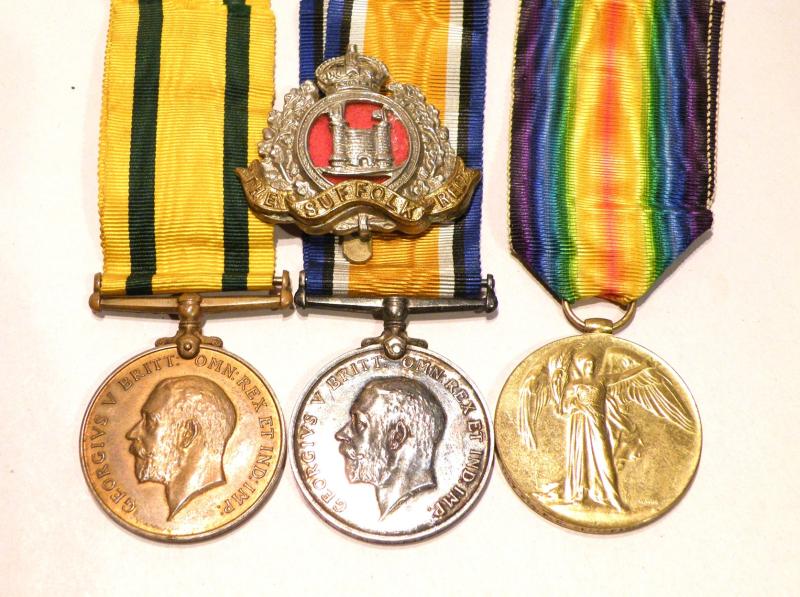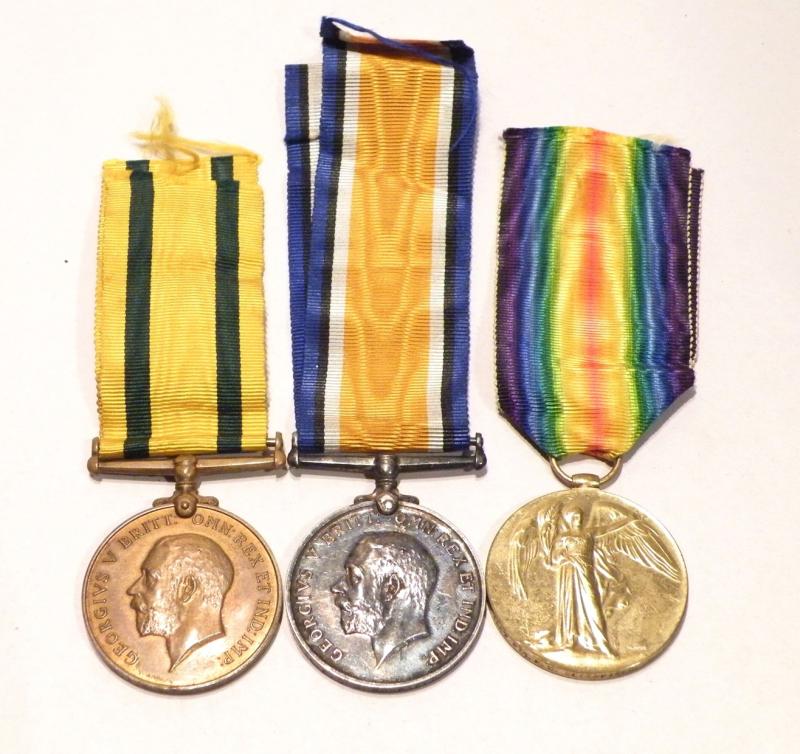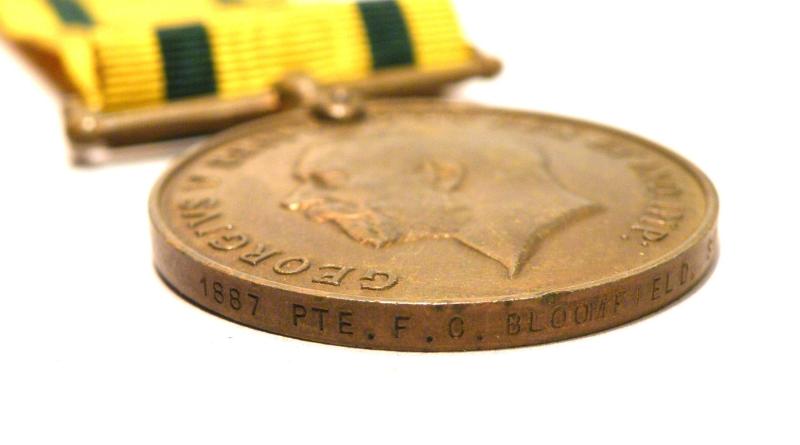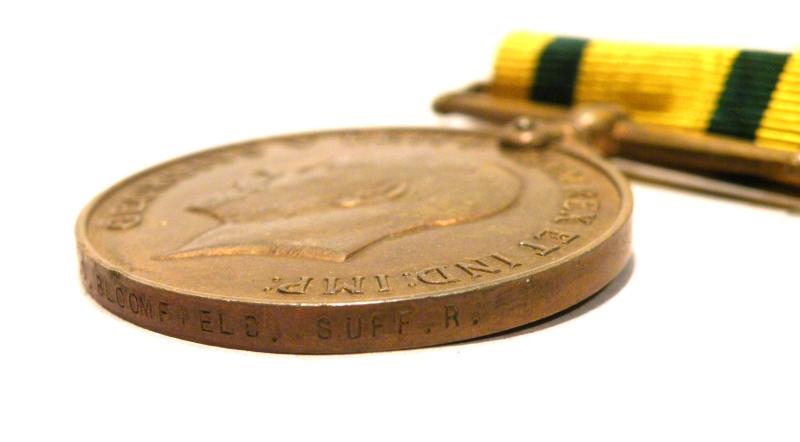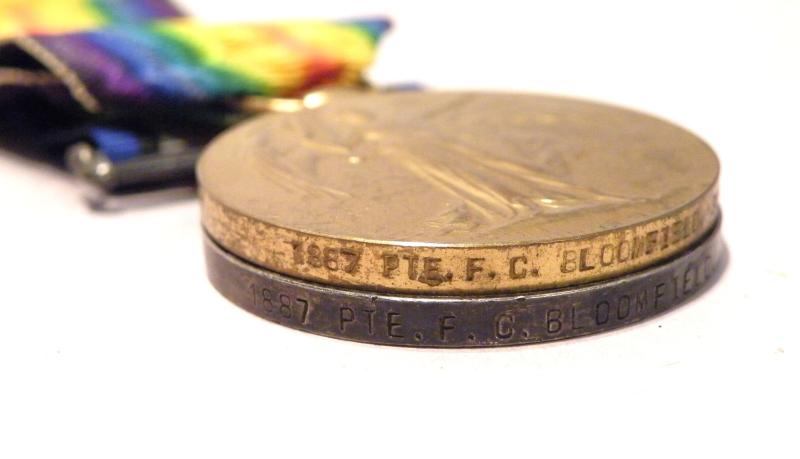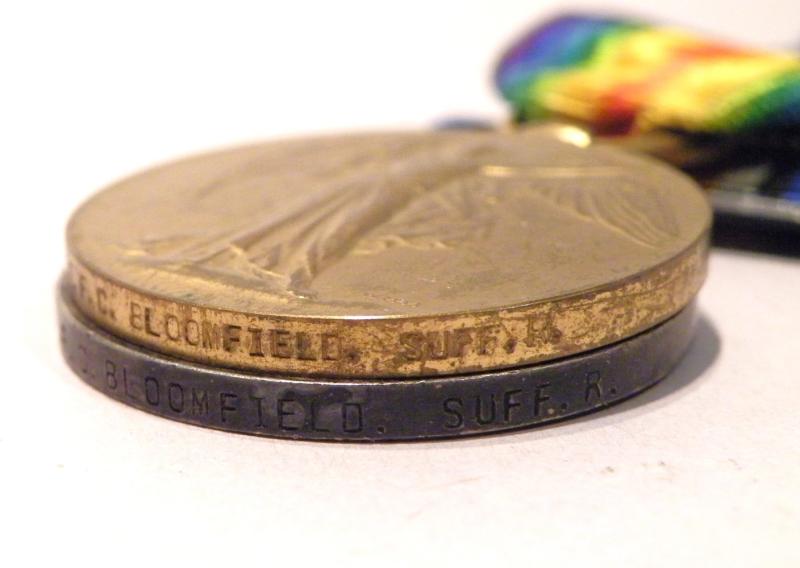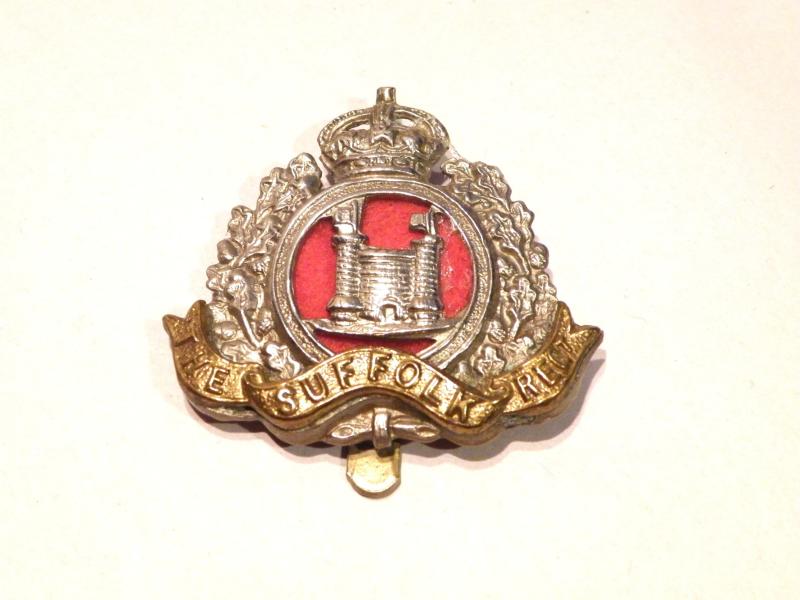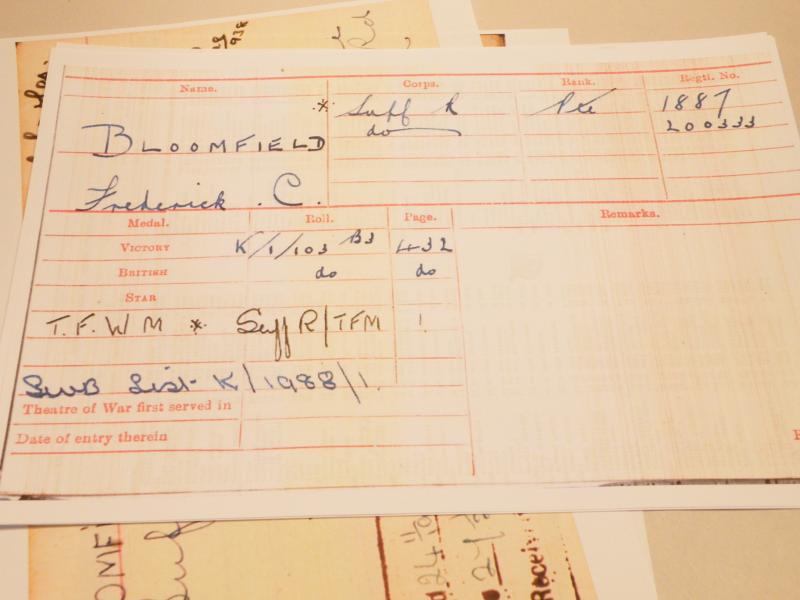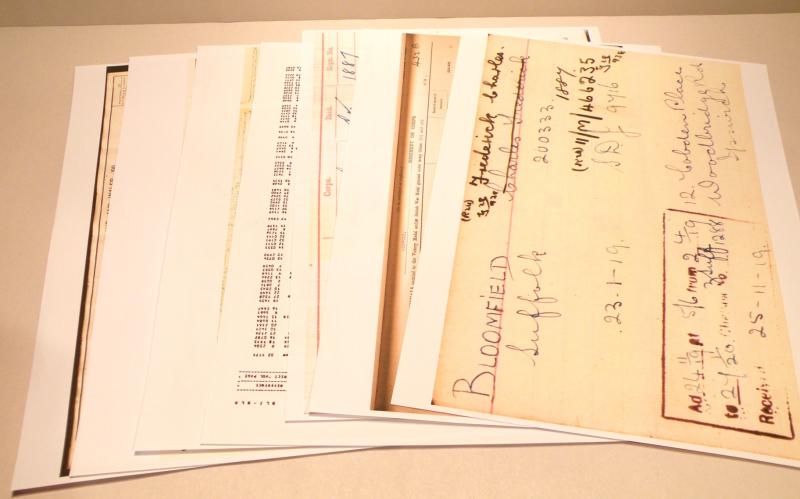Rare WW1 TFWM & Pair to Bloomfield 4th Suffolk's.
A scarce trio of medals comprising of the WW1 Territorial Force War medal for volunteer service overseas, British war medal and Victory medal all correctly named to 1887 Frederick C Bloomfield of the 4th (territorial) battalion Suffolk regiment.
Frederick Charles Bloomfield was born in Ipswich Suffolk 1897 and lived with his father Alfred a boat builder, his mother Alice and his older sister at No 2 Bloomfield Yard, Boars Head Lane, Ipswich.
He joined the 4th battalion Suffolk regiment 24th March 1914, the battalion had its HQ in in Portman Road, Ipswich, part of Norfolk & Suffolk Brigade, East Anglian Division and when war broke out in August 1914 they were mobilised and posted to France on the 5th of November 1914 sailing on the SS Rosette landing at Le Havre a day later. They arrived at Omer and underwent a period of training with newly issued rifles. The weather was cold and snowy, so they used scooped up snowballs as targets. They joined the 1st Manchester’s, 15th and 47th Sikhs and the 59th Scindi rifles now forming the Jullundur Brigade, 3rd (Lahore) Division in December.
They were soon to see action in the attack on the ‘Triangle’ between Bethune and La Basse, the first casualties sustained on December 17th. But it was the defence of Givenchy that was the first combined engagement the battalion took part in, here they helped to hold the town during a critical period. In March 1915 that served with distinction at Neuve Chapelle although to heavy resistance by the enemy the attack and was tried again the next day. It was the first occasion on which British troops had driven the Germans from well established positions in a trench-to-trench attack but with heavy losses. 4 members of the battalion were awarded the D.C.M.
There next encounter was at Ypres, where they were met with heavy shelling by the massive German 420mm guns. The roar of these guns and the sound of the shells tearing through the air, was remarked as sounding like an express train and known there after as the ‘Wipers Express’. At 2 pm on the 26th April the Jullundur brigade advanced to attack, the 4th Suffolks supporting the 47th Sikhs, were hit with heavy machine gun fire and clouds of gas, which hit the allied front line, drifting from left to right particularly disabling the French troops. With such a heavy discharge of gas by the Germans, caused confusion and loss of direction and the British, Indian and French troops became intermingled. The battalion decided to ‘dig in’ and there were not relieved until the early hours the next morning. From early May to September the 4th saw action at Aubers ridge, the attack at rue du Bois and back at Neuve Chapple. Through this time casualties were heavy.
On the 15th of November 1915 they transferred to 46th Brigade, 15th (Scottish) Division, then on the 22nd of February 1916 they transferred to 98th Brigade, 33rd Division. In 1916 they were in action in the Battles of the Somme. In 1917 they took part in the Arras Offensive, The actions on the Hindenburg Line, the Operations on the Flanders coast and the Third Battles of Ypres. On the 15th of February 1918 they transferred to 58th (2nd London) Division as a Pioneer Battalion. They were in action during The Battle of St Quentin, The Battle of the Avre, The Battle of Villers-Bretonneux, The Battle of Amiens, The Battle of Albert and The Second Battle of Bapaume on the Somme. In September they fought in The Battle of Epehy and were in action in October and November during the Final Advance in Artois. They were just as active during 1916, during the battle of the Somme they were in support at the attack on High Wood, Pozieres and the action on August 18th where the battalion suffered very heavy casualties losing 196 of their number. Finally, they had a rest at Christmas near Rancourt but this was short lived and early in the new year they were back in action again. In 1917 they saw action at Arras, the second battle of scarp and the great struggle for Guemappe before moving on to Flanders engaging in the third battle of Ypres, from September 26th to October 3rd. After this the battalion was restructured and were transferred to the 58th division. In the last year of the war, Frederick was wounded, unfortunately it is not known where or when. He was discharged from the Suffolks Depot on the 23rd January 1919, this shows at the end he was on light duties, probably recovering from his wounds. He is also entitled to a silver war badge and the SWB roll states he was discharged with wounds.
After the war Frederick returned home to Ipswich, where he was employed as a goods porter with the Great Eastern Railway. In the 1939 register, Frederick Bloomfield is now working as an engineer labourer, still living with his mother and single.
His medals come with various copy documents, including medal index card, SWB roll and census information.
This is a rare medal, only 180 TFWM were awarded to the Suffolk regiment over all the territorial battalions.
All three medals are in excellent condition and comes with, what is believed to be his original cap badge, this has some wear and signs of use.
Code: 30664
550.00 GBP

